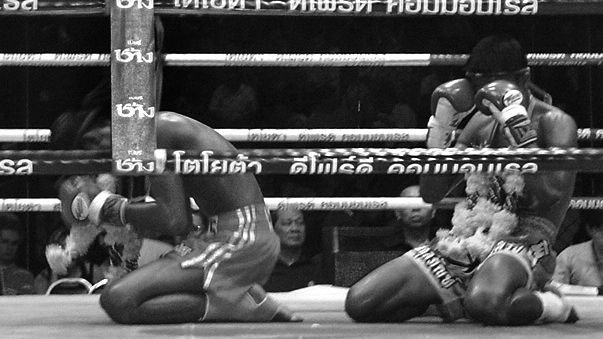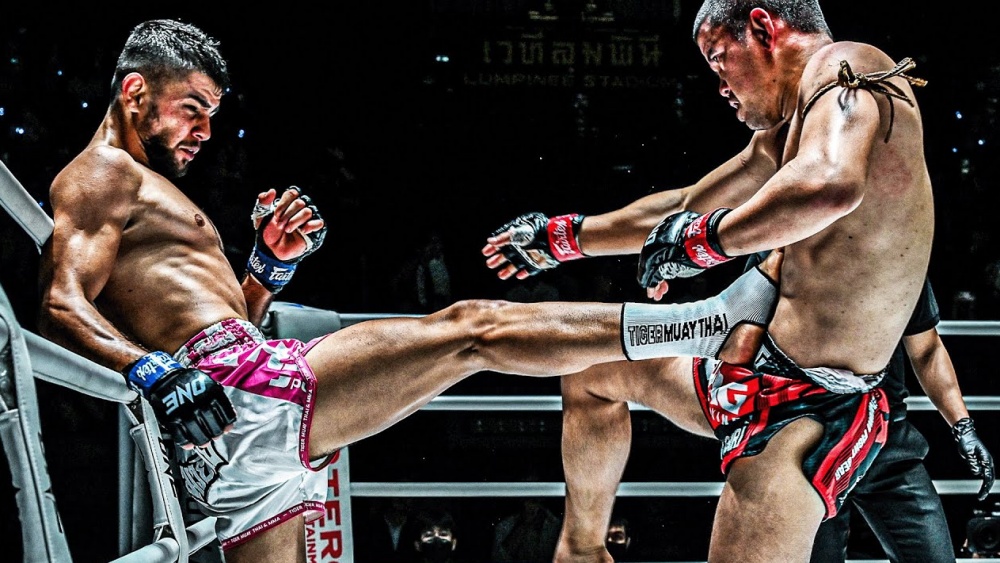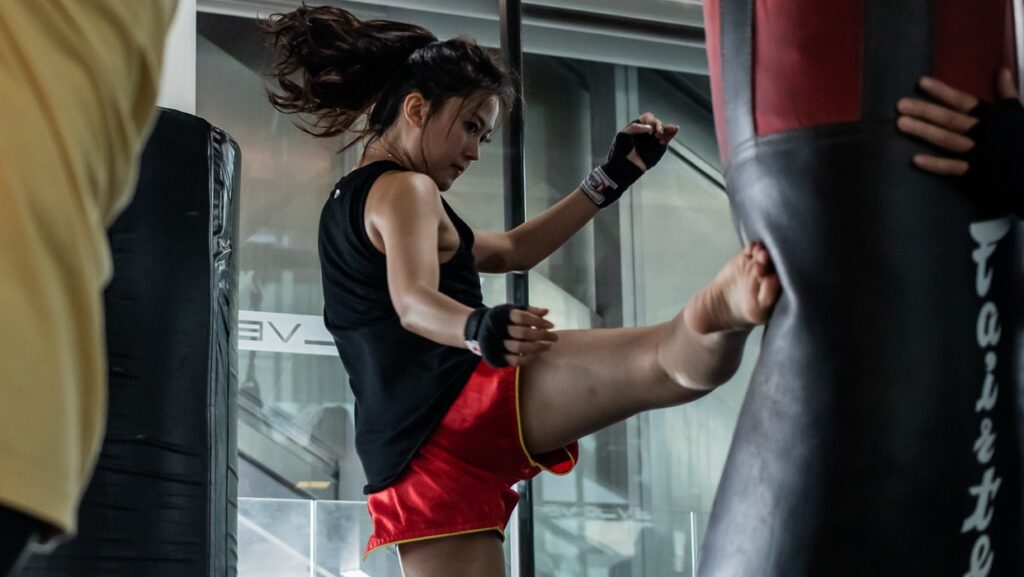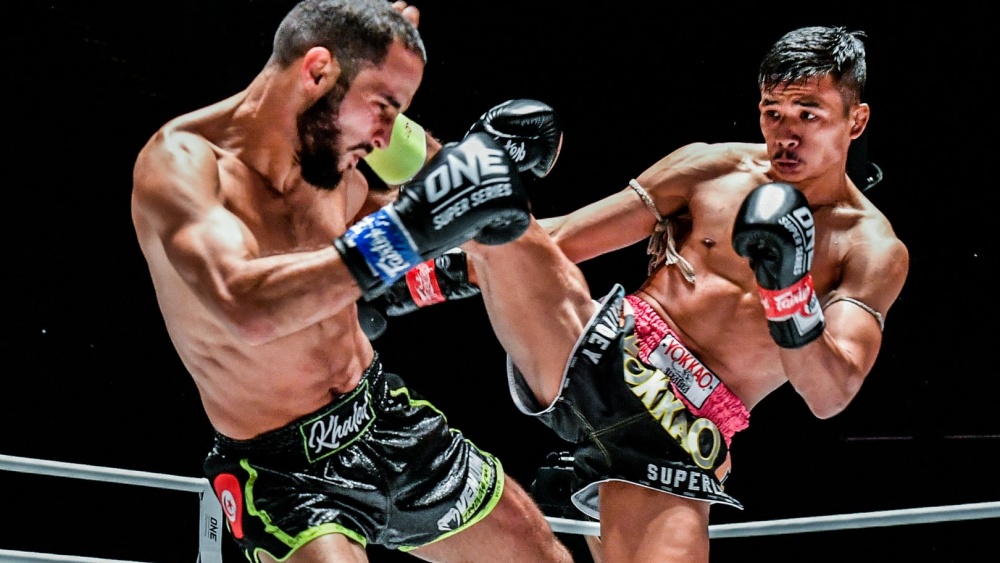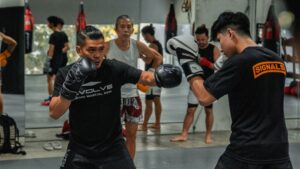To the untrained eye, the movements are unusual, the music is strange and the point is often missed. The Wai Kru Ram Muay is a very traditional part of Muay Thai competition, and often neglected by non-Thai organizations. But what is this mysterious tradition, why do they do it, and what does it all mean? Today, Evolve Daily explains what the Wai Kru Ram Muay is.
The Wai
To understand the Wai Kru Ram Muay you need to understand a little bit about Thai culture. The traditional gesture used to show respect in Thailand is called the “Wai”. It consists of a slight bowing of the head, with the hands pressed together in a prayer-like fashion in front of the face. The higher the hands in relation to the face, and the lower the bow, the more respect is being given. It is both a greeting and a farewell. The “Wai” is also used when apologizing, saying thanks, praying, and showing respect in general.
Kru
This is the Thai form of the Sanskrit word for “Guru”, meaning teacher. Your teacher or teachers are the ones that have given you the skills you have now. If you have a good one, they pay attention to your growth and development as a fighter. They encourage you when you are low and build you back up, but they also will warn you if you step out of bounds and lose discipline. A good teacher will earn your respect rather than demand it, and be someone that inspires you.
Ram Muay
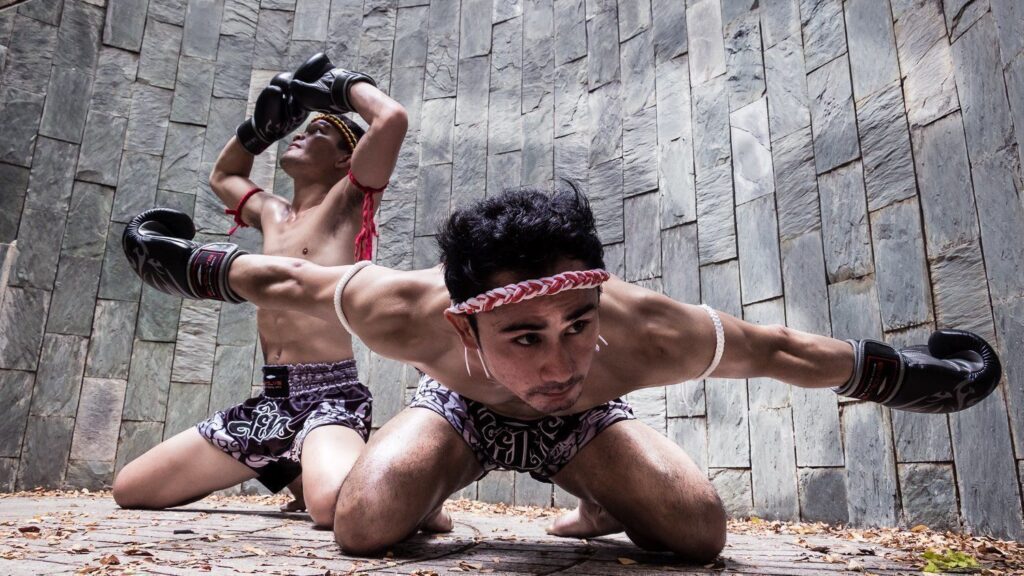
The Wai Kru Ram Muay is a Muay Thai ritual in which students show respect and gratitude to their teachers, parents, and ancestors.
Ram is the Thai word for “dancing” in the classical style, and Muay simply means “boxing”. Literally then, this is the dance of the boxers, or boxing dance. It is both a stretch and warm-up, as well as reflection of gratitude to your teachers, opponent, and everyone connected to you relating to your fighting life.
Each camp typically has its own style of Ram Muay, and the dance-like movements may reflect this. Some may be very complex, and some very simple. They all have subtle variations based on the region and the teacher, and are ways of “showing off” your roots.
Despite subtle differences, many at least start in the same way. Once the traditional Thai music (Sarama) starts and the rhythm is set, fighters will circle the ring counterclockwise and “pray” in each corner of the boxing ring. They’ll often spiral inwards to a point near the center and begin a sequence of movements.
Often the bow is completed three times, with the fighter touching his head to the mat each time. Once this part is completed the variation can be huge. Generally, a fighter will come up on one knee and begin the dance. Movements can symbolize salutes to the Thai royalty, or even to various Buddhist deities.
Yang Sam Khum
One part of the Ram Muay that you may find familiar is the Yang Sam Khum. This part of the dance strongly resembles the traditional footwork within a fight. It’s not used all the time, but it is a great method of closing distance, generating offense, and consolidating defense all at once.
This movement is also rightly referred to as the “three steps movement”. To perform it try standing in your fighting stance, let’s say right leg back and left leg forward for argument’s sake. In time with the music, you step in place, lifting each foot off the floor in turn and then returning it to the floor. It almost looks as if the floor is hot and you’re avoiding burning yourself on it. Every third step, you draw your back leg through and forwards, standing in the opposite stance. In this case, you would switch to southpaw.
The step is usually exaggerated and almost looks like you’re checking a kick as you raise the knee up while stepping. Quite often while “dancing” around the ring, a fighter may run out of room or get too close to his opponent. Using the Yang Sam Khum phase of the dance makes it easy to change directions.
The Finish
At this point, the dance becomes very individualistic. If you pay attention you can see some very specific scenes being acted out within the movements. Here are a few examples:
Sao Noi Pa Pang
Young maiden applies the talcum powder. The whole series of movements is an homage to a famous character from Thai legend. The dance starts off mimicking a walk along a river, followed by bathing, and then finally applying powder to the face. A fighter may kneel or stand balanced on one leg, moving his hands as if applying talcum powder or makeup to the face. The legendary fighter Nong Toom was famous for such a series of movements and it denotes particular grace in the style of the fighter.
Hong Hern
Swan’s flight. In this dance, the fighter will move to each side of the ring and conduct a series of movements reminiscent of a bird flapping its wings fairly slowly while standing on one leg. This is a more modern version of the Ram Muay and can be seen used by many gyms with small variations.
Pra Ram Tam Gwang (Pra Ram Phlaeng Sorn)
Rama follows the deer. This series of movement includes a lot of kneeling and bringing the hand to the brow as if shielding the eyes from sunlight to better see your prey. Some fighters even rub their hands together in “anticipation”, having seen their quarry. This movement includes miming the act of drawing arrows, stringing them to a bow and firing them at the opponent. Often the opponent is “missed” three times, each time the fighter adjusting and stepping closer to his target. You may even get the opponent playing along, dodging or breaking the imaginary arrows. The last arrow is acknowledged as a hit by the person doing the performance, before returning to his corner.
It’s beautiful, graceful and mysterious to watch the Wai Kru Ram Muay in its entirety, and it’s one of those things you truly need to see in the flesh to really appreciate. If you have an instructor willing to teach it, ask them about the Wai Kru Ram Muay to truly enrich your Muay Thai experience.
If you found this article interesting, here are some others that you may enjoy:
The History And Origins Of Muay Thai
